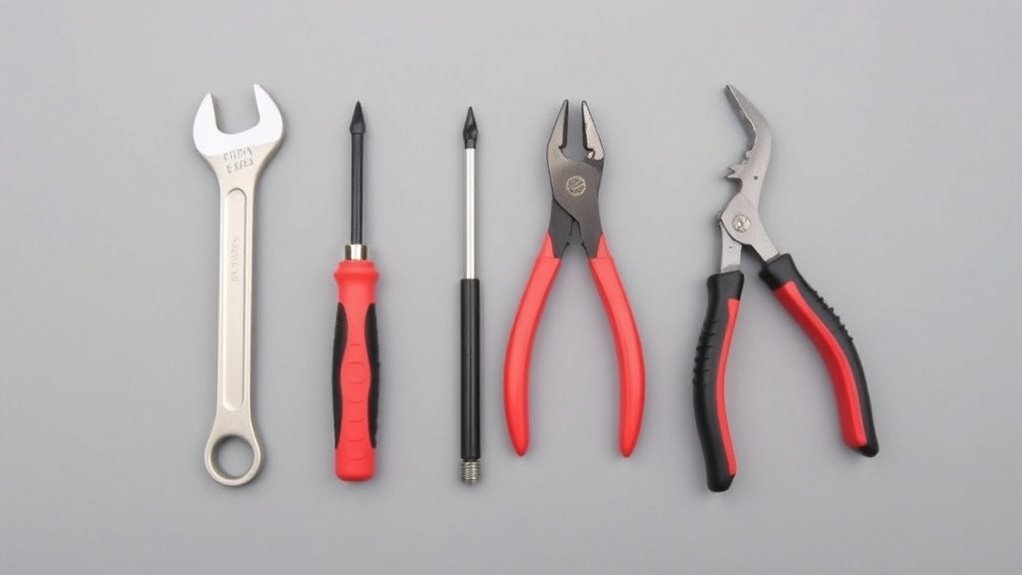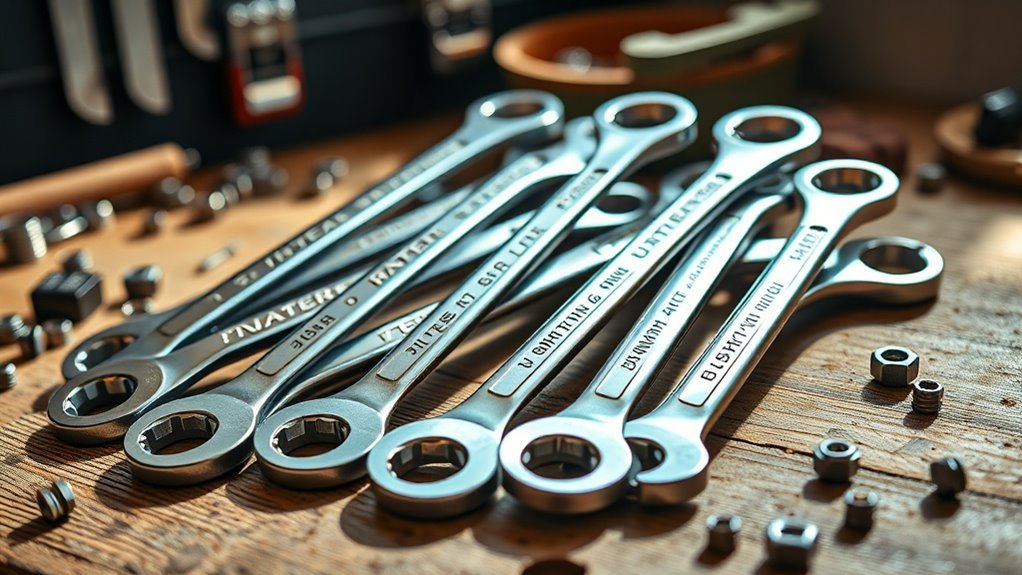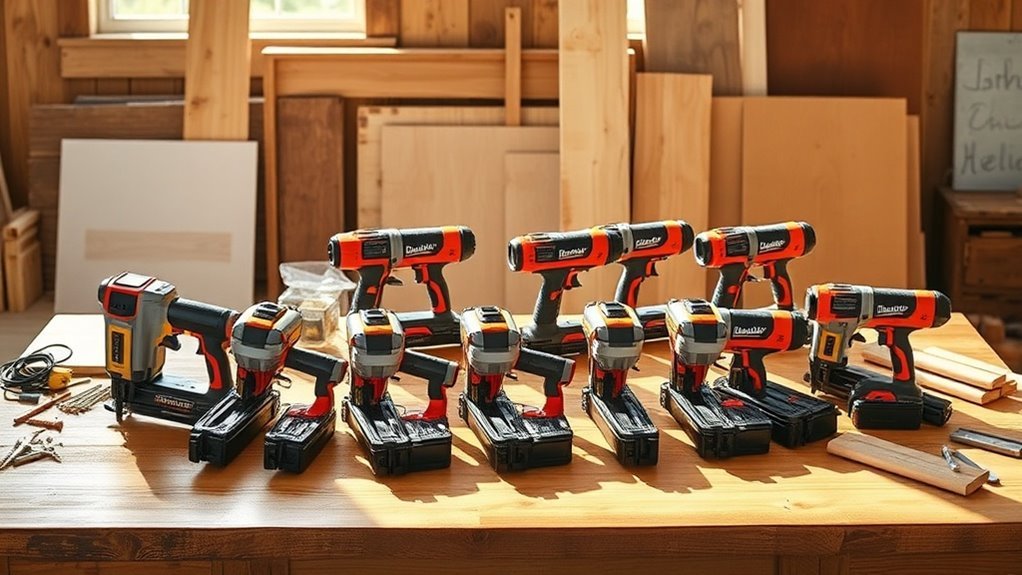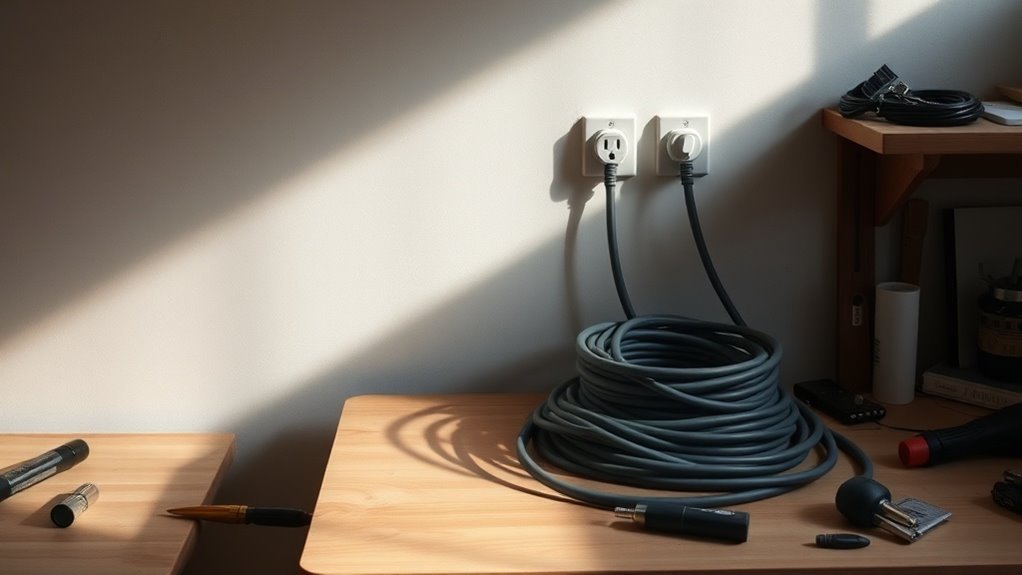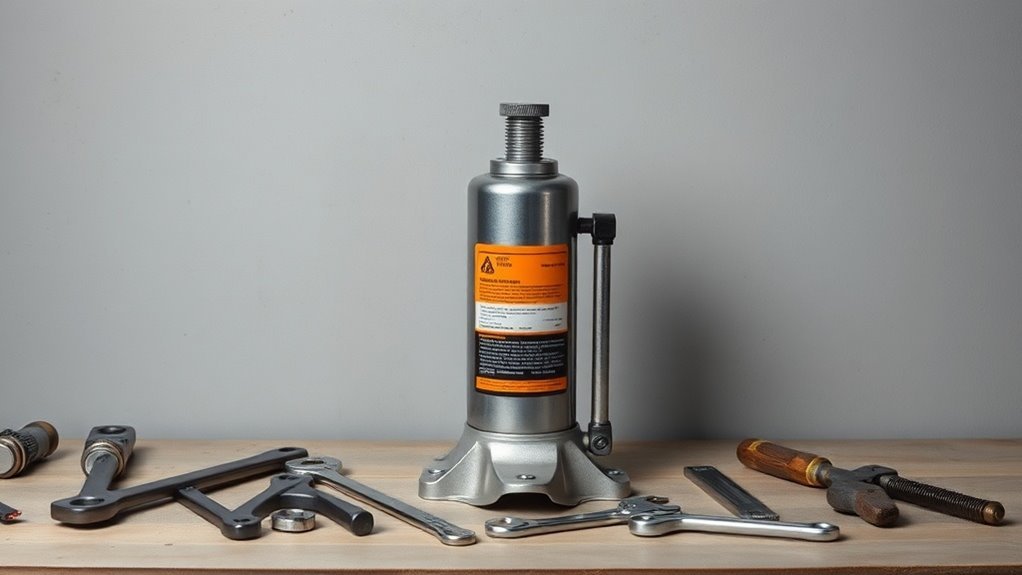How Stud Finders Detect Structures Behind Walls

Stud finders detect structures behind walls by analyzing changes in density or electromagnetic fields. They use either magnetic technology to find screws and nails or electronic sensors to identify density variations. Once a stud is located, the device will signal through lights or sounds, helping you avoid electrical wires or plumbing. Getting familiar with how to operate your stud finder can enhance accuracy and efficiency. You’ll discover more tips and tricks to maximize your tool’s potential.
Key Takeaways
- Magnetic stud finders detect metal fasteners like screws and nails through magnetic attraction, identifying stud locations without needing batteries.
- Electronic stud finders measure changes in density or electromagnetic fields behind walls, offering more precise location detection for wooden or metal studs.
- Advanced stud finders feature live wire detection, enhancing safety by alerting users to nearby electrical wiring as they scan.
- High-end models may include multiple depth settings, allowing for detection through various wall thicknesses and materials.
- Proper calibration and consistent application technique improve the accuracy of stud finders during use, avoiding misidentification of structures.
Understanding the Functionality of Stud Finders
Stud finders are handy tools designed to help you locate wooden or metal studs behind walls, ensuring you can securely hang pictures, shelves, or other fixtures. They work by detecting changes in density or electromagnetic fields within the wall.
When you glide the stud finder along the surface, it analyzes the material below and signals when it detects a stud’s presence. You’ll typically find a light indicator or sound alert that lets you know when you’ve found a stud.
Knowing how to correctly use a stud finder can save you time and frustration—especially when it comes to avoiding electrical wires or plumbing.
Mastering the use of a stud finder can greatly reduce time spent and help you steer clear of hidden hazards.
It’s essential to practice a bit to get a feel for how your specific device operates effectively.
Types of Stud Finders and Their Technologies
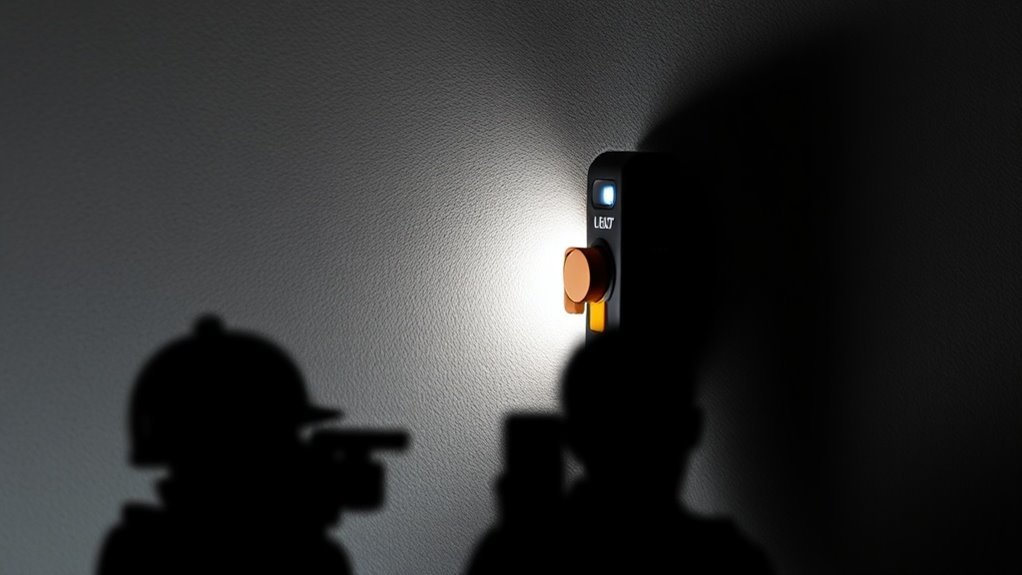
There are several types of stud finders available, each utilizing different technologies to help you locate studs behind walls. The most common are magnetic and electronic stud finders.
Magnetic stud finders rely on a magnet to detect screws or nails within the studs. They’re simple, often battery-free, and great for quick jobs. On the other hand, electronic stud finders use sensors to detect changes in density behind the wall, allowing for more precise readings.
Some high-end models even provide advanced features, like AC wiring detection and multiple depth settings.
Choosing the right type depends on your specific needs and the accuracy you desire for your projects. So consider what works best for you before making a purchase.
How to Use a Stud Finder Effectively
When you’re ready to locate studs efficiently, it’s important to understand how to use your stud finder properly.
Start by ensuring the device has fresh batteries and is calibrated based on the manufacturer’s instructions. Hold it flat against the wall and slowly slide it horizontally. Most finders will beep or light up when detecting a stud. Mark the location lightly with a pencil.
Ensure your stud finder has fresh batteries, calibrate it, and slide it horizontally along the wall to detect studs. Mark your findings!
For best results, repeat the detection process a couple of inches away to confirm the stud’s edges. If you’re using a deeper-sensing model, check settings for drywall thickness.
Finally, make sure to work in a grid pattern to avoid missing any buried studs, especially in older walls where irregularities may occur.
Happy hunting!
Common Mistakes to Avoid When Using a Stud Finder
Proper technique is critical for effectively finding studs, but avoiding common mistakes can make a considerable difference in your success. One major error is failing to calibrate your stud finder; always follow the manufacturer’s instructions for best results.
Not applying consistent pressure while moving the tool can lead to inaccurate readings, so keep it steady. Additionally, avoid using the stud finder near metal objects or electrical wires, as these can cause interference.
Finally, be cautious of wall textures; irregular surfaces may hinder accurate detection. If you make one of these mistakes, you might end up missing your target stud or misidentifying materials behind the wall.
Advanced Features of Modern Stud Finders
While choosing a stud finder, you’ll be impressed by the advanced features that set modern devices apart from their predecessors.
Many now come equipped with digital displays that provide clear readings, making it easier for you to locate studs accurately. Some models feature deep-scanning modes, allowing you to detect multiple layers of drywall and other materials.
Additionally, you might find stud finders with built-in sensors for identifying live wires, enhancing safety during your projects. Plus, many devices offer audio or visual indicators to alert you when you’ve found a stud.
With enhanced precision and user-friendly interfaces, modern stud finders simplify the process, ensuring you get the job done right and avoid mishaps.
Maintenance and Care for Your Stud Finder
Although it’s easy to overlook, maintaining your stud finder is essential for guaranteeing its longevity and accuracy.
Start by keeping it clean; dust and debris can interfere with its sensors. Use a soft cloth to wipe the device, avoiding harsh chemicals.
Keeping your stud finder clean is vital; dust can disrupt sensors, so gently wipe it with a soft cloth.
Next, check the batteries regularly; depleted batteries can give you false readings. If your stud finder has a calibration feature, use it before major projects to guarantee you’re getting precise results.
Always store the device in a safe, dry place, away from extreme temperatures. Additionally, consider storing the device in a manner that prevents hazards associated with clutter, which can enhance both its safety and longevity.
Finally, follow the manufacturer’s guidelines for any specific maintenance requirements.
Questions
Can Stud Finders Detect Electrical Wiring or Plumbing Pipes?
Yes, some stud finders can detect electrical wiring and plumbing pipes, but it depends on the device. Make sure to check the specifications, as not all models have this capability. Safety’s important during any project.
Are Stud Finders Accurate on All Wall Types?
Stud finders aren’t always accurate on all wall types. Picture coaxing a whisper from an unyielding wall; their effectiveness can falter with textured surfaces or thick materials. You might need alternative methods for precise results.
How Deep Can Stud Finders Detect Structures Behind Walls?
Stud finders can typically detect structures behind walls up to about 3/4 inches deep, depending on the specific model and wall material. For thicker walls, you might need a more advanced device to locate studs accurately.
Can I Use a Stud Finder on Ceilings?
Sure, you can use a stud finder on ceilings! Some might worry it won’t work as well, but many models are designed for both walls and ceilings. Just make sure you follow proper scanning techniques for best results.
What Should I Do if My Stud Finder Gives Inconsistent Readings?
If your stud finder gives inconsistent readings, try recalibrating it according to the manufacturer’s instructions. Confirm your walls are clear of obstructions, and consider testing another area for more reliable results before proceeding.
Conclusion
To sum up, mastering the art of using a stud finder can save you from hitting the proverbial wall—literally. With the right knowledge and practice, you’ll confidently uncover the hidden structures behind your walls. Keep in mind the common pitfalls, and embrace the advanced features of today’s devices to make your projects smoother. Just like finding the right stud can support your shelves, the right techniques can elevate your DIY skills to new heights.

